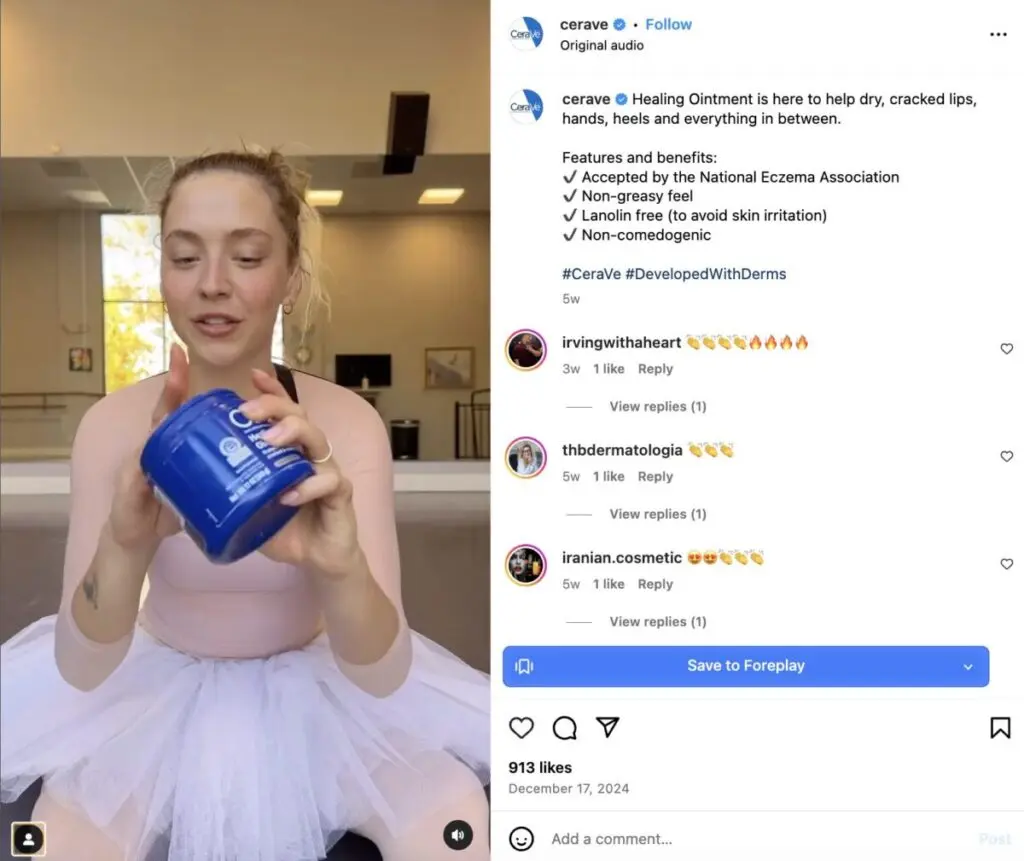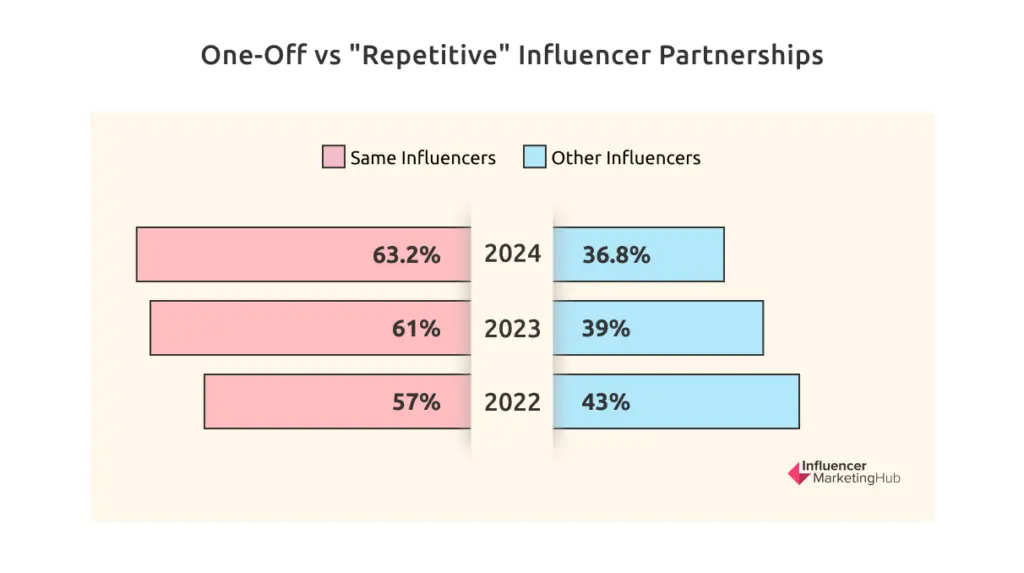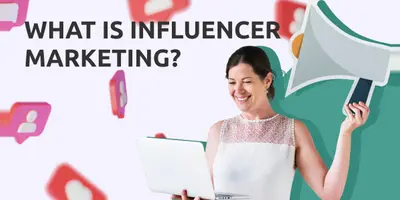After a couple of decades of massive growth, the influencer marketing industry is experiencing an inflection point owing to influencer fatigue. In fact, over 52% of marketers in our October Influencer Marketing Report acknowledge the rise in influencer fatigue. This is hitting the industry hard as marketers realize that their once-impactful strategies are no longer hitting the mark.
This post explores in depth the causes of this phenomenon and how it impacts your campaigns. It also breaks down some of the key steps that marketers can take to adapt to this shift. Let’s get started.
The Triggers of Influencer Fatigue: Why It Happens and How to Address It
Why are consumers experiencing influencer fatigue? This is a vital question to get to the root of the problem and understand how to address it.
Oversaturation of Influencer Content
Influencer content is everywhere, with platforms being flooded with repetitive ads and promotions. The rise of influencers has exacerbated this, leading to an oversaturation of influencer content. When there’s too much influencer content to consume, audiences become disengaged, leading to influencer fatigue.
As such, brands and influencers alike need to prioritize originality to stand out in a sea of cookie-cutter content. Fresh takes and interesting new concepts can provide a refreshing break from other influencer content that seems “too promotional.”
The Authenticity Crisis
By accepting every promotion opportunity that comes their way, many influencers have lost the essence that made them trustworthy in the first place – authenticity. In fact, 87% of consumers now believe that influencers don’t even use the products they promote, according to Wakefield Research. So consumers are increasingly perceiving influencer-brand collaborations as transactional and insincere.
This is why it’s crucial for brands to only partner with influencers who are well-aligned with their mission and values. Better yet, you can even find influencers among your existing customers. So you can build authentic partnerships with influencers who already love your brand.
CeraVe does a great job of this, fostering relationships with influencers who actually believe in their products. The brand showcases influencers from all walks of life using their products and explaining the benefits they’ve experienced.
Economic Disconnect and Conspicuous Consumption
With many influencers portraying lavish lifestyles through their content, consumers are finding it increasingly harder to relate with them. Moreover, the aspirational style of content no longer has the desired impact during an economic downturn as everyday consumers feel alienated from the influencer.
Instead, consumers are getting their recommendations from everyday social media users (read: nano-influencers), to whom they can relate. A Bazaar Voice study even found that 82% of consumers are buying products based on the recommendations of everyday social media users.
Brands can leverage the power of nano-influencers to create campaigns that are more relatable to everyday consumers. Meanwhile, influencers need to create more content that offers a balance between aspiration and accessibility so as to not alienate the target audience.
Psychological Burnout Among Consumers
Consumers are tired of getting bombarded by promotional content. Everywhere they look – whether they’re watching a video on YouTube or scrolling through Reels on Instagram – they get ads. This has resulted in decision fatigue and burnout, reducing emotional engagement in influencer content.
The most effective way for influencers to tackle this is by diversifying content formats and reducing the frequency of promotional posts. This is another good reason for influencers to be more selective with their partnerships and only work with brands that they truly believe in. As such, they can focus more on creating content to engage their audience, and whatever promotion they do will be authentic and trustworthy.
The Risks of Ignoring Influencer Fatigue
As influencer fatigue is still a fairly new phenomenon, marketers may not be too concerned that it’ll affect them. However, ignoring the impact of influencer fatigue leaves you unable to adapt your strategies according to the changing landscape. Let’s discuss a few risks that you might experience from ignoring it.
Declining ROI and Engagement Rates
Reduced trust in influencers is a characteristic that’s common with consumers experiencing influencer fatigue. When they see an influencer constantly promoting products from different brands, they become less convinced that the influencer actually believes in all those products. So they’re no longer letting those influencers guide their buying decisions, resulting in campaigns that fail to drive conversions.
Similarly, people lose interest in influencer content because their feeds are oversaturated with the same type of content. As a result of this burnout, they’re paying less attention to what the influencer has to say. Before you know it, your promotional content goes unnoticed, let alone drives engagement.
With consumers collectively experiencing influencer fatigue, engagement rates are suffering, and ROI is on the decline. This is one of the main reasons why marketers are shifting the focus to nano-influencers, who boast higher engagements and more authenticity. According to our July Influencer Marketing Report, the engagement with nano-influencers increased from 49.26% to 55.61%.
Meanwhile, marketers are moving away from celebrities and mega influencers due to the diminishing returns of partnering with them. Our October Influencer Marketing Report even noted that influencer fatigue was specifically pronounced with mega influencers.
Brand Reputation Challenges
Influencers may have once gotten away with promoting products they don’t even use. But with consumers becoming more disillusioned by influencers, they’ve become more equipped to see through the deception. So an inauthentic partnership could easily lead to distrust and backlash, posing a threat to your brand reputation.
Similarly, if you’re not considering the current consumer attitudes toward influencers, you risk putting together a tone-deaf campaign. For example, promoting a luxury getaway during an economic crisis may not be the best way to work with influencers. Not only could this alienate your target audience, but it could result in significant backlash affecting your reputation.
In a similar vein, as influencers are responsible for changing perceptions around your brand, a misaligned partnership could result in negative sentiment. When consumers no longer feel connected to your brand or have negative perceptions about it, they’ll no longer want to buy from you. You may notice your engagements drop as your unfollows rise when you’re over-reliant on influencers, especially ones who aren’t a good fit for your brand.
L’Oreal’s partnership with TikTok influencer Mikayla Nogueira is one of the most notable examples of an influencer campaign where brand reputation took a hit. The influencer sparked controversy with viewers accusing her of using false lashes to exaggerate the product’s effect. This brought on a slew of negative comments calling out the influencer for being misleading, which didn’t do much to improve L’Oreal’s brand reputation.
Redefining Influencer Marketing for Modern Audiences
Considering the massive impact of influencer fatigue on the current landscape, it’s crucial for marketers to adapt their strategies to better connect with the audience. Let’s explore some essential steps to redefine influencer marketing so that it resonates with modern audiences.
Why Nano-Influencers Are the Future of Authentic Engagement
As consumers lose trust and interest in traditional influencers, there’s a growing shift toward smaller influencers who can connect with everyday consumers. These influencers may have a smaller following, but this following is made up of people who share their interests.
This empowers them to drive real conversations and engagement within a close-knit community, allowing for niche targeting and higher engagements. Moreover, their content is relatable and authentic enough to garner the trust of their followers.
As such, marketers are starting to show a strong preference for nano-influencers. According to our 2024 Influencer Marketing Benchmark Report, 44% of marketers were planning to use nano-influencers. This is a marked increase from the 39% who opted to work with nano-influencers in 2023, indicating the growing preference for smaller influencers.
Bare Home started their influencer marketing journey by fostering meaningful connections with nano and micro-influencers through influencer gifting programs. They focused on influencers who regularly produced high-quality content and had an engaged community. These influencers were given creative freedom so they could deliver more organic and authentic content for the brand.
Within a year, the brand generated 450+ influencer posts, which garnered 1.8 million impressions and over 300k interactions. Their engagement rate of 3.92% far surpassed the industry average of 1.53%, giving testimony to the impact of smaller influencers.
Building Meaningful Collaborations for Long-Term Success
Consumers today can easily see through the transactional promotions associated with some influencer campaigns. These promotions lack substance since influencers are simply promoting products that they’re paid to promote instead of promoting products they truly believe in.
More often than not, these types of promotions will fail to have an impact on the target audience. Even if they do generate some positive results, they’re often short-lived, requiring you to run another expensive campaign from scratch.
Instead, brands need to invest their time and money into building meaningful collaborations that continue to deliver an impact in the long run. This is why over 63% of marketers in our State of Influencer Marketing report choose to work with the same influencers instead of one-off partnerships.
Nurture your relationships with your best influencers so they become true advocates of your brand and continue to authentically promote your products. Make sure to incorporate them into the creative process instead of simply telling them what to say. This can ensure genuine alignment with content that feels more organic than promotional.
The above Bare Home case study serves as an excellent example of how to approach your influencer relationships. In addition to giving them creative freedom, the brand also launched seasonal campaigns that continued to nurture their existing relationships.
Beyond Instagram: Exploring New Frontiers for Influencer Campaigns
Instagram’s popularity for influencer marketing is undeniable. But it’s equally obvious that the platform is becoming oversaturated with influencer content and promotions. Marketers need to go beyond Instagram and explore new channels to stand a chance at beating influencer fatigue.
Twitch is an excellent option as it allows real-time audience interactions through live stream sessions. This facilitates authentic engagements that help audiences feel more connected with influencers.
Substack is another rising platform that offers support for informative and thoughtful long-form content. Audiences have to actively subscribe to the influencer’s content on the platform. So influencers are reaching people who are highly interested in what they have to say, allowing brands to reach niche audiences. Reports also indicate an 80% increase in fashion and beauty subscriptions on the platform.
BeReal is another emerging platform that marketers can leverage for authentic engagement. As a platform known to be “anti-influencer,” it allows users to only post pictures that can’t be edited or filtered, encouraging them to share their authentic lives. Additionally, you can’t have “followers,” but you can add people as “friends,” allowing for a closer connection between users.
Marketers can leverage these close interpersonal relationships to garner trust and encourage authentic product recommendations. “Influencers” on the platform can be everyday consumers and existing brand customers leading the conversation about specific topics, products, and brands.
Shift from Hard Selling to Storytelling That Resonates
Content that directly promotes a product can come across as too sales-y. It’s also one of the biggest culprits behind influencer fatigue. Consumers are tired of being sold to, and a hard-selling approach to influencer marketing is no longer going to cut it.
Instead, the focus should be on telling stories that audiences can emotionally connect with. Encourage influencers to share narratives that showcase your brand’s impact through personal anecdotes and relatable use cases. Have them create content targeting pain points that their followers can relate to and how your brand addresses it.
When Savers wanted to rebrand themselves as a go-to destination for creative and eco-conscious shoppers, they partnered with influencers to showcase narratives aligning with this goal. They gave influencers the creative freedom to produce content that told a story about how pre-loved fashion can be fresh and exciting.
The campaign generated over 88 million impressions and 5.6 million engagements at an engagement rate of 6.38%. This speaks volumes about the impact of creative storytelling on influencer campaigns.
How Marketers Can Evolve as Influencer Strategies Transform
With the influencer marketing landscape undergoing significant transformation, marketers need to evolve along with it. This requires making strategic adjustments to existing approaches and keeping a pulse on new trends influencing the landscape. Adapting to shifting consumer expectations will allow you to thrive in a post-fatigue era.
Emerging Trends
AI-driven tools for influencer discovery and campaign personalization
AI’s grasp on the influencer marketing industry is only growing stronger, with 63% of marketers in our Influencer Marketing Benchmark report planning to use it in their campaigns. The main purpose? To streamline the influencer discovery process, with over 55% using it for influencer identification.
Marketers can leverage AI to quickly analyze influencer profiles and automatically match brands with the right influencers. Platforms like Sprout Social use technology like the Affinity Engine, which automatically identifies creators with a predisposed interest in your brand. Use this to build more personalized campaigns and deliver messaging that truly resonates.
Greater emphasis on transparency and ethical practices
As consumer trust becomes increasingly difficult to earn, there’s a growing trend among marketers to emphasize transparency with their influencer promotions. Instead of strategic product placements and hidden agendas, the latest focus is on disclosing paid partnerships and giving honest reviews.
With influencers being called out left and right for overhyped products and undisclosed promotions, brands need to pivot from scripted content and rigid editorial guidelines. Encouraging influencers to be honest and transparent is the key to prioritizing ethicality and earning consumer trust.
Strategic Adjustments
Balancing influencer campaigns with other marketing channels
An over-reliance on influencers is the fastest way to failure when issues like influencer fatigue arise. It’s crucial to balance your campaigns with other digital marketing strategies for a more sustainable and wholesome approach. Make sure you’re also investing in SEO, content marketing, and paid advertising to tide you over even if your influencer campaigns take a hit.
Prioritizing community engagement over broad reach
The days of partnering with influencers simply because of their large following are over. Instead, brands need to prioritize influencers who can drive authentic engagement within their respective communities. Micro- and nano-influencers, in spite of their smaller reach, can lead genuine conversations with a niche audience, resulting in more impactful campaigns.
Combat Influencer Fatigue and Supercharge Your Campaigns
There’s no easy way to “fix” influencer fatigue, and it’s safe to assume that the phenomenon isn’t going away anytime soon. The best thing that marketers can do is pivot and adapt to the changing landscape, paying closer attention to authenticity, community engagement, and nano-influencers. Make the most of the tips and trends highlighted above to get ahead of the game and combat influencer fatigue.










![Monthly Influencer Marketing Report [October 2024]](https://s.influencermarketinghub.com/imaginary/resize?width=400&height=200&type=webp&url=https://influencermarketinghub.com/wp-content/uploads/2024/05/cover.jpg)
